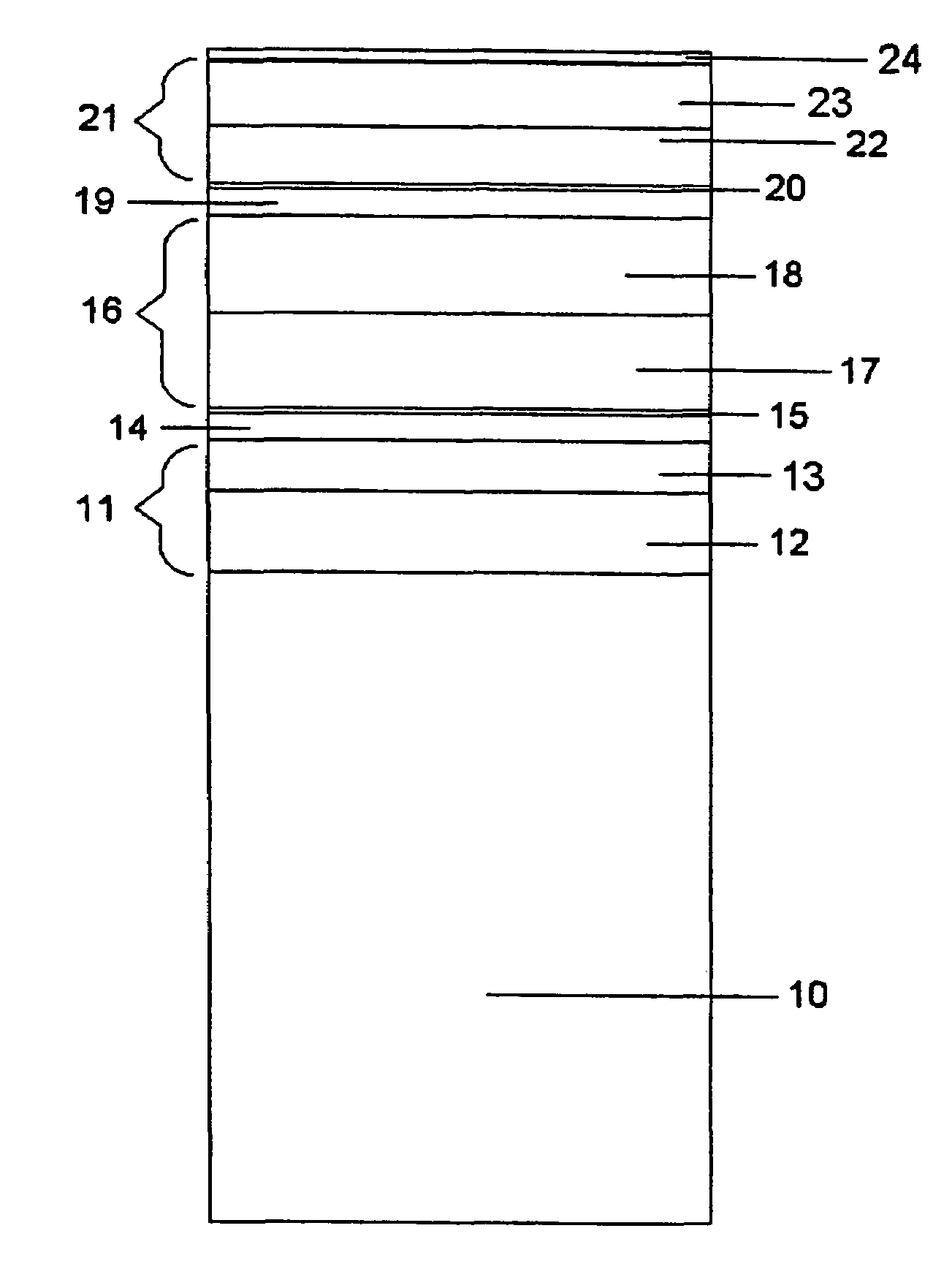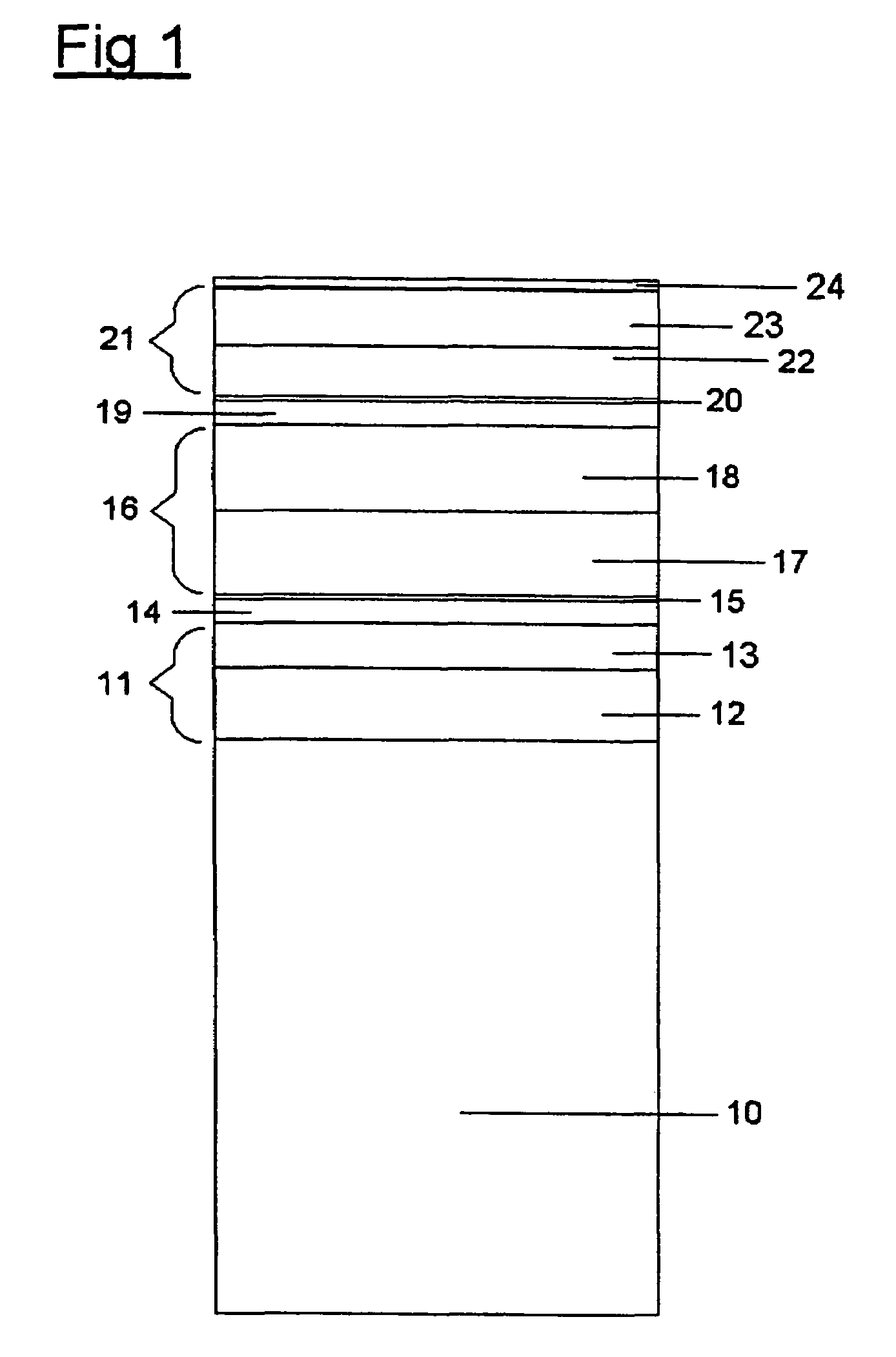Glazing
a technology of glazing panels and coatings, applied in the field of glazing panels, can solve the problems of causing an increase in the tl of the glazing panel, and achieve the effects of enhancing the properties of the coating stack, preventing significant contamination and/or diffusion, and enhancing mechanical properties
- Summary
- Abstract
- Description
- Claims
- Application Information
AI Technical Summary
Benefits of technology
Problems solved by technology
Method used
Image
Examples
example 1
[0046]FIG. 1 shows a double Ag layer, heat treatable, coating layer deposited on a substantially flat or planar glass substrate by magnetron sputtering and having the following sequential structure:
[0047]
ReferenceGeometricalratio of Sn / Znnumberthicknessby weightGlass substrate10 2 mmBase antireflective layer11comprising:lower layer of ZnSnOx12200 Å0.7upper layer of ZnSnOx13100 Å0.17Ag14100 ÅTi overlying barrier15 40 ÅCentral antireflective layer16comprisingcentral lower layer of ZnSnOx17650 Å0.7upper layer of ZnSnOx18100 Å0.17Ag19100 ÅTi overlying barrier20 40 ÅTop antireflective layer21comprising:lower layer of ZnSnOx22 80 Å0.17upper layer of ZnSnOx23140 Å0.7protective overcoat of Ti24 30 Å
[0048]in which ZnSnOx is a mixed oxide containing Zn and Sn deposited in this example by reactively sputtering a target which is an alloy or mixture of Zn and Sn in the presence of oxygen.
[0049]Alternatively, a mixed oxide layer may be formed by sputtering a target which is a mixture of zinc o...
PUM
| Property | Measurement | Unit |
|---|---|---|
| luminous transmittance | aaaaa | aaaaa |
| luminous transmittance | aaaaa | aaaaa |
| temperature | aaaaa | aaaaa |
Abstract
Description
Claims
Application Information
 Login to View More
Login to View More - R&D
- Intellectual Property
- Life Sciences
- Materials
- Tech Scout
- Unparalleled Data Quality
- Higher Quality Content
- 60% Fewer Hallucinations
Browse by: Latest US Patents, China's latest patents, Technical Efficacy Thesaurus, Application Domain, Technology Topic, Popular Technical Reports.
© 2025 PatSnap. All rights reserved.Legal|Privacy policy|Modern Slavery Act Transparency Statement|Sitemap|About US| Contact US: help@patsnap.com


